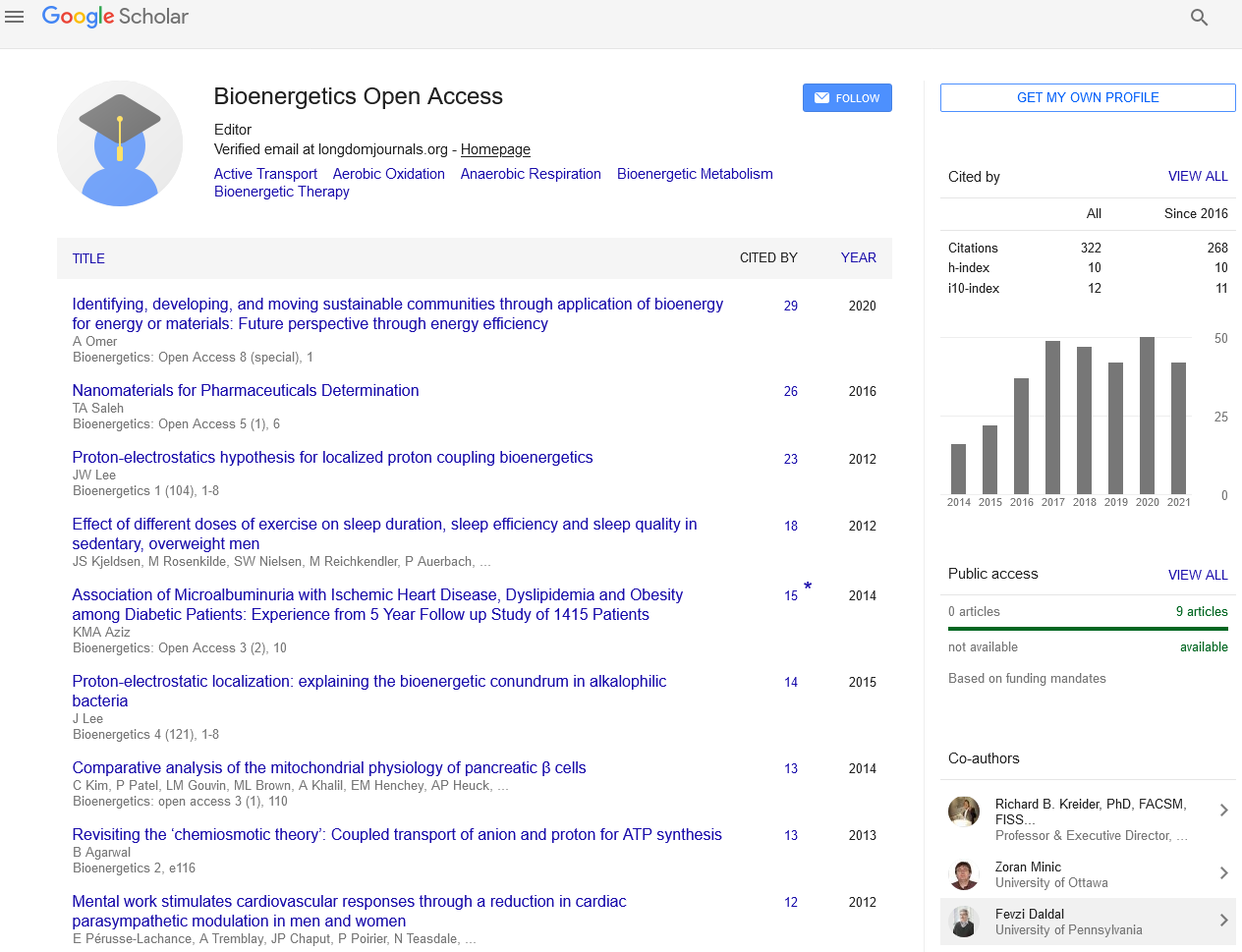Indexed In
- Open J Gate
- Genamics JournalSeek
- Academic Keys
- ResearchBible
- RefSeek
- Directory of Research Journal Indexing (DRJI)
- Hamdard University
- EBSCO A-Z
- OCLC- WorldCat
- Scholarsteer
- Publons
- Euro Pub
- Google Scholar
Useful Links
Share This Page
Journal Flyer

Open Access Journals
- Agri and Aquaculture
- Biochemistry
- Bioinformatics & Systems Biology
- Business & Management
- Chemistry
- Clinical Sciences
- Engineering
- Food & Nutrition
- General Science
- Genetics & Molecular Biology
- Immunology & Microbiology
- Medical Sciences
- Neuroscience & Psychology
- Nursing & Health Care
- Pharmaceutical Sciences
Abstract
N-Acetylaspartate Metabolism Underlays the Structural and Functional Units of the Vertebrate Brain: A Bioenergetic Rationale for Clinical Observations of Changes in the Neuronal Biomarker "NAA" in many Human Brain Disorders
Morris H. Baslow and Alessandro P. Burlina
The “structural unit” of the vertebrate brain has been identified as a multi-cellular unit, formed from a single neuron and at least one each of its associated macroglial chaperone and vascular endothelial cells, which exhibits most of the fundamental properties of a brain. These properties include its genetic codes, cellular associations, mechanisms of neuronal information encoding, and its “operating system”, a homeostatic energy supply mechanism that enables neurons to continuously communicate with other neurons regardless of the bioenergetic demands made on the neural network in any part of the brain at any time. A structural unit is defined by three cell types required for the unique tri-cellular metabolism of N-acetylaspartate (NAA) and N-acetylaspartylglutamate (NAAG) including neurons, oligodendrocytes and astrocytes, and by their physiological roles operating in a four-cell domain which also includes vascular endothelial cells. A “functional unit” of the brain is a two-neuron entity, defined by the minimum number of neurons required for rapid intercellular communication. Thus, each functional unit is formed by the process of synaptogenesis from two single-neuron structural units and represents the smallest unit that exhibits all of the basic signaling properties present in a complex brain. These properties include all mechanisms of neuronal connectivity, information storage, and signaling. Since a structural unit is defined by NAA and NAAG intercellular metabolism and physiology, and two structural units form a functional unit, the NAA-NAAG system is intimately associated with all normal brain activities as well as all brain disorders. In this review, the hierarchal structural and functional units of the brain are described. In addition, a bioenergetic rationale for using the NAA-NAAG metabolic system as a biomarker for neuronal abundance and/or viability is presented, and examples of some human diseases that can be traced to interference with one or more components of structural or functional units are provided.

